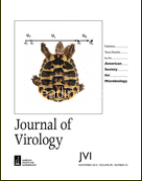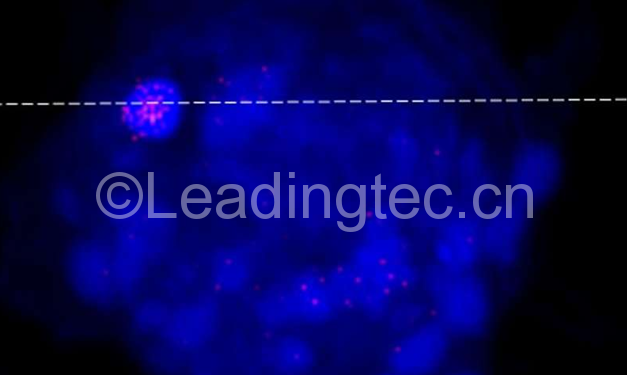2015年10月26日 讯 /生物谷BIOON/ –近日,一项刊登在国际杂志the Journal of Virology上的研究论文中,来自内布拉斯加林肯大学(University of Nebraska-Lincoln,UNL)的研究人员通过研究首次给出直接证据表明,感染藻类的病毒可以在某些哺乳动物机体中侵袭并且发生潜在复制。
图片来源:medicalxpress.com
被称为刺胞虫绿藻病毒1(ATCV-1)的病原体被认为是在绿藻中长期寄生的一种绿藻病毒,2014年的一项研究发现在人类咽喉拭子中的ATCV-1会发生基因序列的重组。这项研究中研究者则将ATCV-1引入到巨噬细胞中,巨噬细胞在小鼠、人类及其他哺乳动物机体的免疫反应中扮演着关键的作用,利用荧光染料和组装的三维成像技术对小鼠细胞中的病毒进行标记,研究者就会发现ATCV-1可以潜在成功地潜入细胞中去。
随后研究者还发现,在小鼠细胞中引入ATCV-1后24小时病毒的水平会增加至原先的三倍,病毒水平的增加就表明,ATCV-1可以在巨噬细胞中进行复制,此前有研究发现,绿藻病毒属的病毒仅会在有限的动物宿主体内进行复制;研究者Dunigan表示,巨噬细胞通常会因病毒而进行多种特性改变,包括程序性的细胞死亡等,本文研究中研究者指出,我们想通过研究证实是否以及病毒以何种方式来潜入到哺乳动物的机体中。
目前研究者仍然并不清楚是否,基于细胞的病毒诱导产生的因子可以在整个动物机体中被诱导,而且是否这些诱导产生的因子会引发动物或者人类认知能力的损伤,Dunigan说道,目前我们仍然在探索细胞对ATCV-1的其它反应,同时调查这些反应是否会引发小鼠机体的系统性改变。(生物谷Bioon.com)

doi:10.1128/JVI.01254-15
PMC:
PMID:
Response of mammalian macrophages to challenge with the Chlorovirus ATCV-1.
Petro TM1, Agarkova IV2, Zhou Y3, Yolken RH4, Van Etten JL2, Dunigan DD5.
It was recently reported that 44% of healthy humans in a study cohort had DNA sequences similar to Chlorovirus ATCV-1 (family Phycodnaviridae) in oropharyngeal samples and had decreases in visual processing and visual motor speed compared with individuals in whom no virus was detected. Moreover, mice inoculated orally with ATCV-1 developed immune responses to ATCV-1 proteins and had decreases in certain cognitive domains. Because heightened IL-6, nitric oxide (NO), and ERK MAP-kinase activation from macrophages are linked to cognitive impairments, we evaluated cellular responses and viral plaque forming units in murine RAW264.7 and primary macrophages after exposure to ATCV-1 in vitro for up to 72 h after virus challenge. Approximately 8% of the ATCV-1 inoculum was associated with macrophages after 1 h and increased 2-3 fold over 72 h. Immunoblots using rabbit anti-ATCV-1 detected a 55 kDa protein consistent with viral capsid protein from 1 to 72 h and an increasing de novo synthesis of a previously unidentified 17 kDa protein beginning at 24 h. Emergence of the 17 kDa protein did not occur and persistence of the 55 kDa protein declined over time when cells were exposed to heat-inactivated ATCV-1. Moreover, starting at 24 h, RAW264.7 cells exhibited cytopathic effects, Annexin V staining and cleaved-caspase 3. Activation of ERK MAP-kinases occurred in these cells by 30 min post challenge, which preceded expression of IL-6 and NO. Therefore ATCV-1 persistence in and induction of inflammatory factors by these macrophages may contribute to declines in cognitive abilities of mice and humans.

